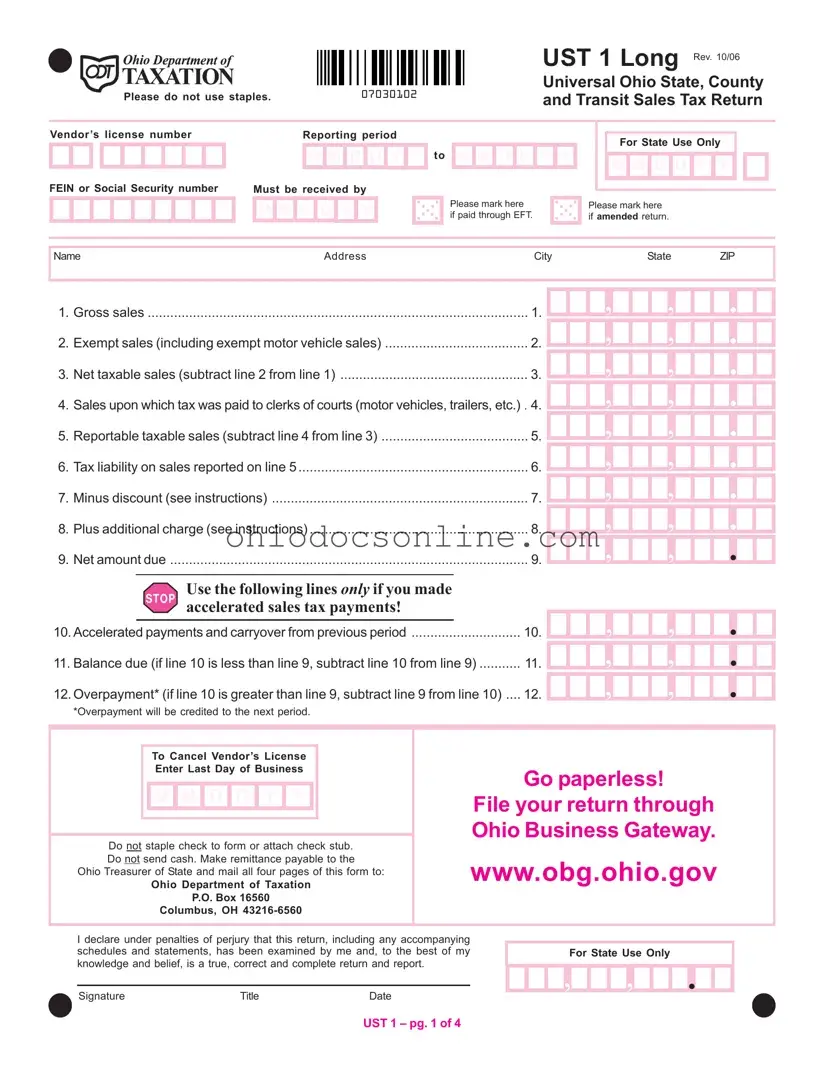Ohio Ust 1 Template in PDF
The Ohio UST 1 form is a crucial document used for reporting sales and transit tax returns in Ohio. Businesses must complete this form to accurately declare their gross and exempt sales, ensuring compliance with state tax regulations. Understanding the UST 1 form helps vendors navigate their tax obligations effectively.
Open Editor
